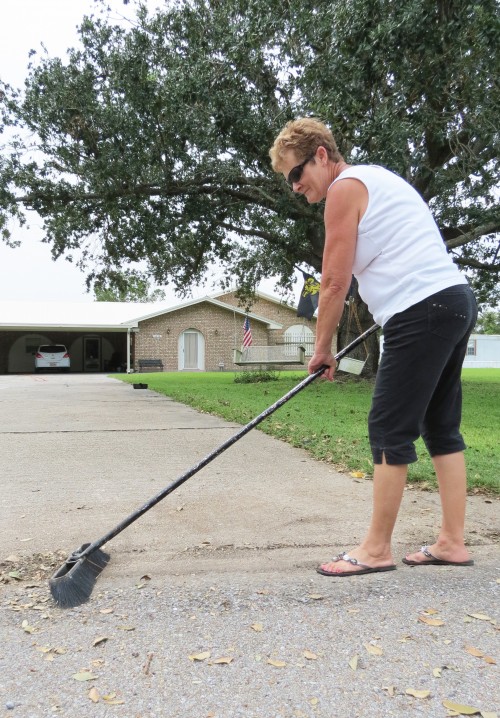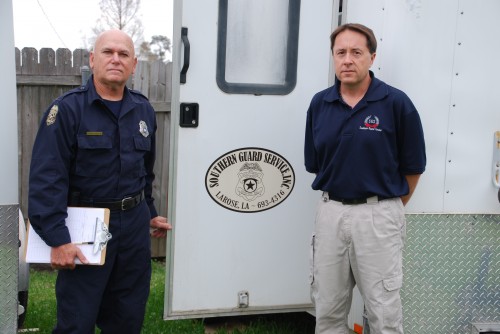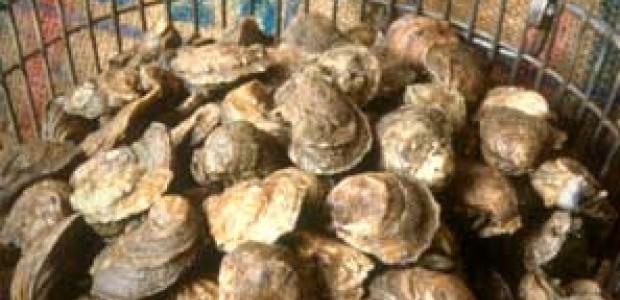
Lawn, tree trimming business booms
September 12, 2012
Security service locked-and-loaded to protect industry
September 12, 2012Two years of freshwater intrusions, resulting from efforts to fight-off oil spill contents in 2010 and river flooding in 2011, hampered Louisiana’s oyster production.
Scientists and industry leaders are now concerned what impact slow moving rains of Hurricane Isaac, between Aug. 28 and 30, might have had on an industry that the Louisiana Seafood Marketing Board lists as generating $317 million annually to the state’s economy.
“[Louisiana officials] closed everything going into the storm,” Motivatit Seafood CEO Mike Voisin said. “That is a normal event response.”
As Isaac approached Louisiana’s southeastern coast and transitioned from tropical storm to a Category 1 hurricane, the Louisiana Department of Wildlife and Fisheries, responding to an order from the Department of Health and Hospitals, closed harvest areas from Lake Borgne in St. Bernard Parish to Vermillion Bay in Vermillion Parish, including reaches into Terrebonne Parish.
On Thursday, only the area around Marsh Island had been opened to resume oyster harvests. However on Monday the DHH reopened some oyster beds located in coastal areas of St. Bernard, Plaquemines, Jefferson and Lafourche Parishes.
At the same time, the LDWF launched a two-week study of reefs and other areas that officials admitted would further stall activity for this segment of the fishing industry.
“We are starting our post-hurricane reef evaluations,” LDWF research scientist Patrick Banks said. “Traditionally [following hurricanes] we see sediment plumes and occasionally those can end up on the reefs. We also often see marsh vegetation that settles reefs, decomposes and causes oxygen problems.”
Banks said sediment movement has to do with water flow and, as Isaac traveled at a slow speed, there was a greater chance of increased sediment problems for oyster production. He also cautioned that it is too early to jump to any conclusions.
“The initial meteorological data indicated that east of the Atchafalaya River there was not much rain impact, so they opened pretty much everything below Marsh Island,” Voisin said. “But there is very little oyster production there.”
The seventh-generation oysterman said samples taken from oyster fields might help determine when full operations could resume, but the storm’s influence on harvest expectations for 2012 would not be known anytime soon.
“They have to have [what is equal to] pre-event samples to indicate an area has returned to its pre-storm conditions,” Voisin said. “I expect we will see some openings as a result of these runs, perhaps as late as Monday.”
The DHH considered opening Terrebonne Parish waters last week based on initial testing, but held off when it was determined that the area had up to four more inches of rain than first estimated.
“[Hurricane Isaac] seemed a little more intense than a Category 1 storm and it hung around a lot longer,” Voisin said. “We are also seeing from Bayou Lafourche east where there is a lot of trash in the marsh grass.”
According to Voisin, processing plants did not take significant hits during the storm, but damaged docking facilities, particularly in Grand Isle and Venice have added challenges due to restricted access from flooding.
“I haven’t yet formulated numbers, but [losses] will be in the tens of millions of dollars,” Voisin said. “I expect it will be two weeks at a minimum that production is shut down. We will see impact on water bottoms for oysters, on vessels that have been sunk and the fishing communities are damaged.”
“[The harvest] will probably be worse [than last year],” Banks said. “Right now much of the harvest areas are closed. That is not uncommon after these storm events. That is how the DHH insures public safety with regards to shellfish. Until that department tests the water and makes sure it is clean a lot of the harvest will be shut down.”
DHH Molluscan Shellfish Program Administrator Gordon LeBlanc said inspecting oyster fields is essential to public health.
“We are testing for fecal coloform,” LeBlanc said. “With all the runoff we had that goes into the estuaries. Once it is safe to go out we need to get two consecutive samples that come back satisfactory. [That] means we come back with the fecal coloform count of less than 43 parts per million.”
When the DHH has achieved its testing goal, growing areas will be reopened. “In some cases where you have areas that were heavily impacted it may require we get meat samples as well,” LeBlanc said. “Tissue samples from the oysters. That would also be analyzed for fecal coloform along with two consecutive samples of water.”
Isaac’s impact related to the entire Louisiana seafood industry has yet to be determined, but Voisin said the presence of a hurricane does not necessarily mean an automatic loss.
“Sometimes there is a jubilee after a storm where you get more products,” Voisin said regarding oyster activity. “The water that comes off the land and gets into the bayous a lot of time brings in a lack of oxygen, but sometimes there are positive benefits. A lot of times storms re-oxygenate [waters], but the problem with this storm was that it just sat here so long.”
“This is a weird event because there was so much storm surge and rain over a long period of time,” Nicholls State University Associated Professor of Biology Allyse Ferrara said. “It is going to be interesting.”
Louisiana has approximately 1.7 million acres of public waters and 50,000 acres of reefs that the LDWF will be checking in the weeks to come. “At the same time private lease owners will be checking their 400,000 acres,” Banks said.
The Gulf of Mexico, as a whole, was back to work Friday. During an average year Louisiana produces more than 250 million pounds of oysters. The LDWF had already anticipated a 35 percent decline in oysters harvested during 2012, compared to the previous two years. Now, according to Banks, the oyster season could clam-up more than expected.
The Louisiana Department of Wildlife and Fisheries has launched a two-week study of Louisiana’s oyster fields. Research findings could mean baskets of oysters might not be as easy to get this season after Hurricane Isaac plodded inland from the Gulf of Mexico and mixed-up sediment, damaged marsh grasses and combined fresh water with saltwater.











